I've had a few ROVs in the last 5+ years and have really enjoyed being able to see what is below the surface. After a couple of failed systems that required more work than enjoyment, I've found the Chasing M2 ROV.
ROVs and quad copters (commonly called drones) are something I've always been interested in. I've flown quad copters for at least 10 years now, and built them by hand back when you had no other choice. Before that, I flew RC planes and helicopters and built many different sizes and shapes.
Quad copters have become so popular as of late that it has sort of ruined the enjoyment for me, however. Seeing people fly them in really inappropriate or illegal situations makes me far more wary flying mine. I don't want to make someone uncomfortable in an anchorage, or even have a conversation about it. That makes me a little sad since I love images of anchorages, especially with angled sun showing the bottom contours. I still fly one of my many quads whenever I get the chance and there aren't a lot of people around, but nowhere near as much as I used to.
When ROVs started becoming a bit easier to get involved with, I was excited because you really can't bother too many people if you're diving underwater in a short radius location. I tried building a couple and had OK results, but it was definitely not high quality video, and struggled in other areas.
The Trident
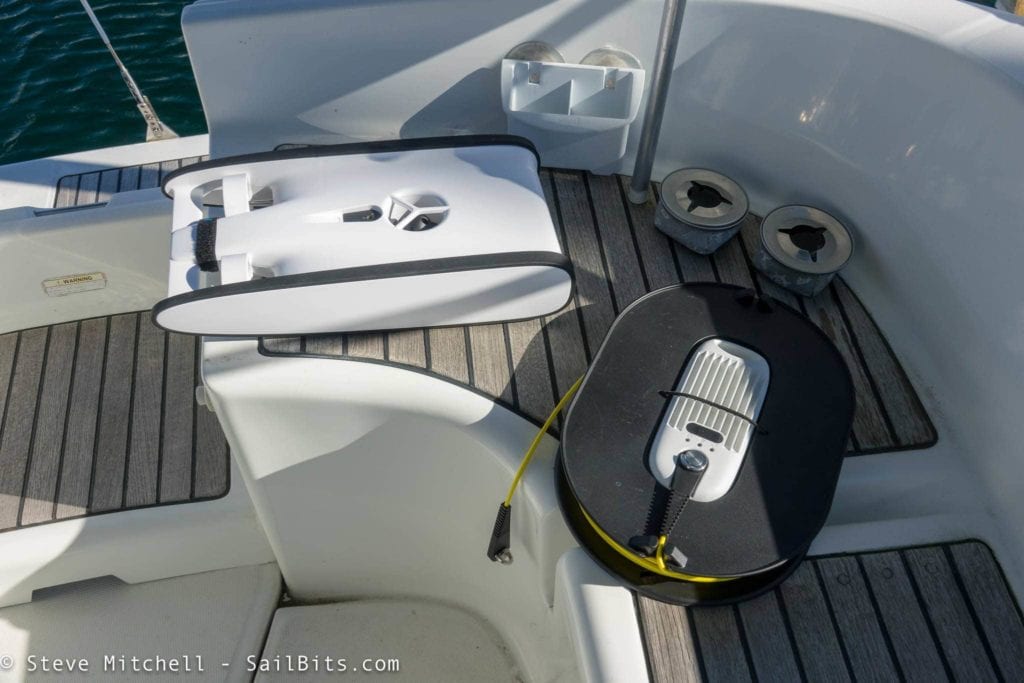
I supported the OpenROV Trident kickstarter, and had one of their first units named Rhenium, and that was really where things started to get better. Unfortunately, OpenROV (now Sofar) really could never get the design right, nor their support. For 3 years, my ROV was broken for 3-6 months because of their poor motor design, delays in getting replacements, and many other problems. In the last few months, they announced they would be retiring the Trident product and no longer supporting it, which doesn't surprise me.
OpenROV and others were some of the first companies that pushed the boundaries for consumer or even prosumer level ROVs, and I'm happy they got into the business. As a result, other companies like Chasing, Qysea, and Powervision, just to name a few, were able to come out with their own designs which were easier to use and had more features.
Looking for a replacement
In the 2nd year of failed Trident parts, I decided to start looking for a replacement. Most of the ones I found were either really cheesy cheap things that had the camera quality of a flip-phone, or really expensive professional rigs that were meant for legitimate underwater exploration.
By the end of that year, and going into the 3rd year of having a flaky ROV, I finally started seeing other companies come out with products that looked better designed, had some nice features lacking with the Trident, and were reasonable price-wise.
After a few months in 2020 of communicating with various vendors, I decided to go with the Chasing Innovations M2.
Chasing M2
Chasing has been around since 2016 and has produced a lot of consumer ROVs like the Dory, which is one of their most popular. The M2 came out in the last year or so, and really captured my attention.
It was modular allowing both easy motor replacement (a pain with the Trident, and a frequent operation) and the ability to attach various things like GoPro cameras and grabbing arms. The biggest change was that it had 8 motors instead of 3 on the Trident, giving it complete mobility on every axis. This would allow me to point the camera literally any direction I wanted, where all of my previous ones were mostly fixed angles.
Initial reviews seemed positive, and while the app and software sounded like a work in progress, it seemed like the best platform out there at the time, and I purchased it in September 2020.
Unboxing
I chose the Chasing M2 + 200 meter tether + E-Reel and the gripping claw/arm. That combo ended up being about $4100.
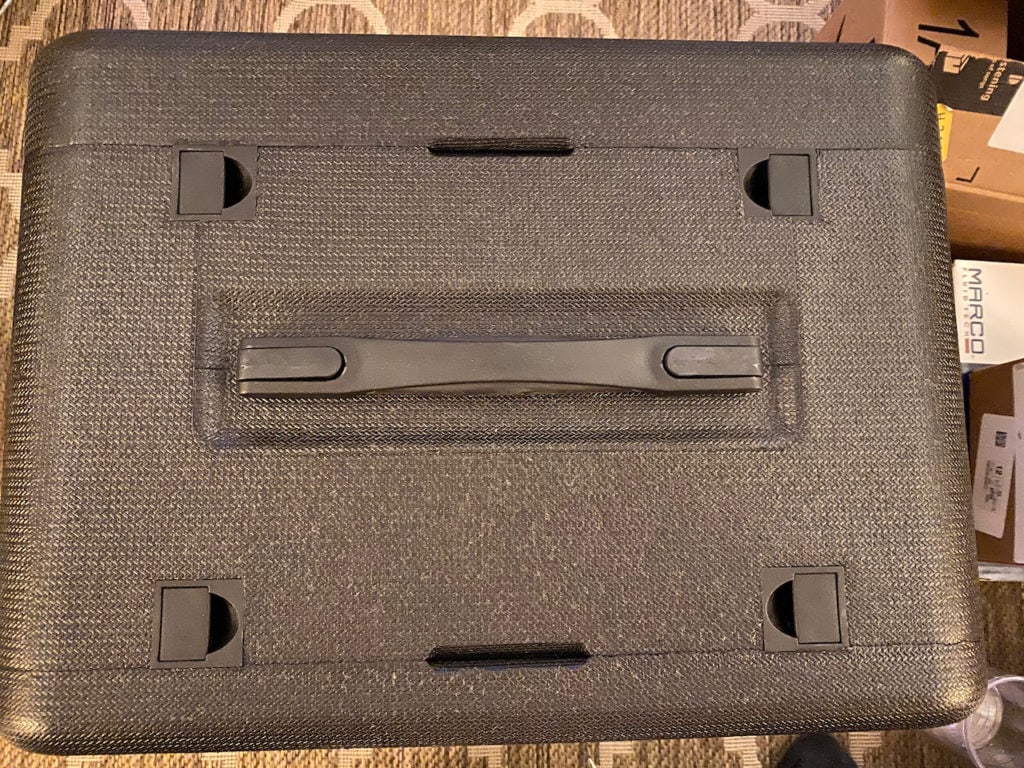
The ROV, remote and reel (not the E-Reel part) all came in one big square re-usable foam case, which is super nice. I've continued using this as my primary storage for the ROV. It can't accommodate any mounts or other attachments, and I didn't use the reel storage area as I transferred that to the E-Reel. That extra space I use to stash my GoPro mount and pieces.
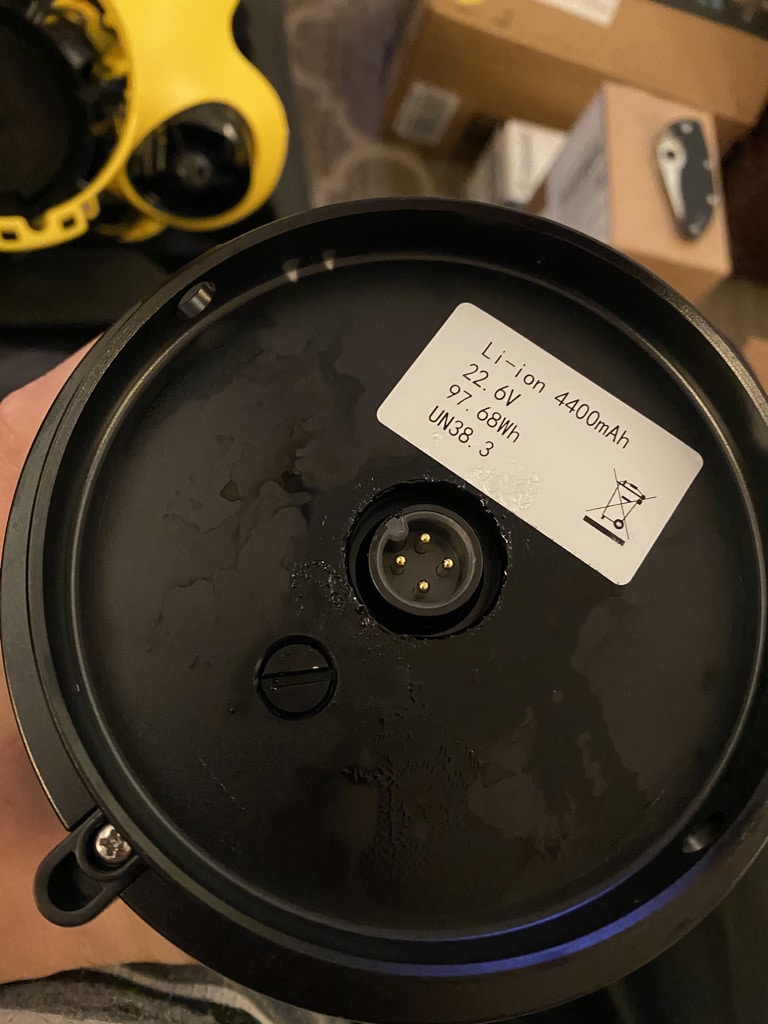
The ROV battery is a 22.6V 4400mAh or 97 watt hour cylinder that mounts in the back of the ROV. It has a waterproof connector that slides together with the ROV mounting, two pins that hold it in on either side, and a bracket on the back to keep it secure.
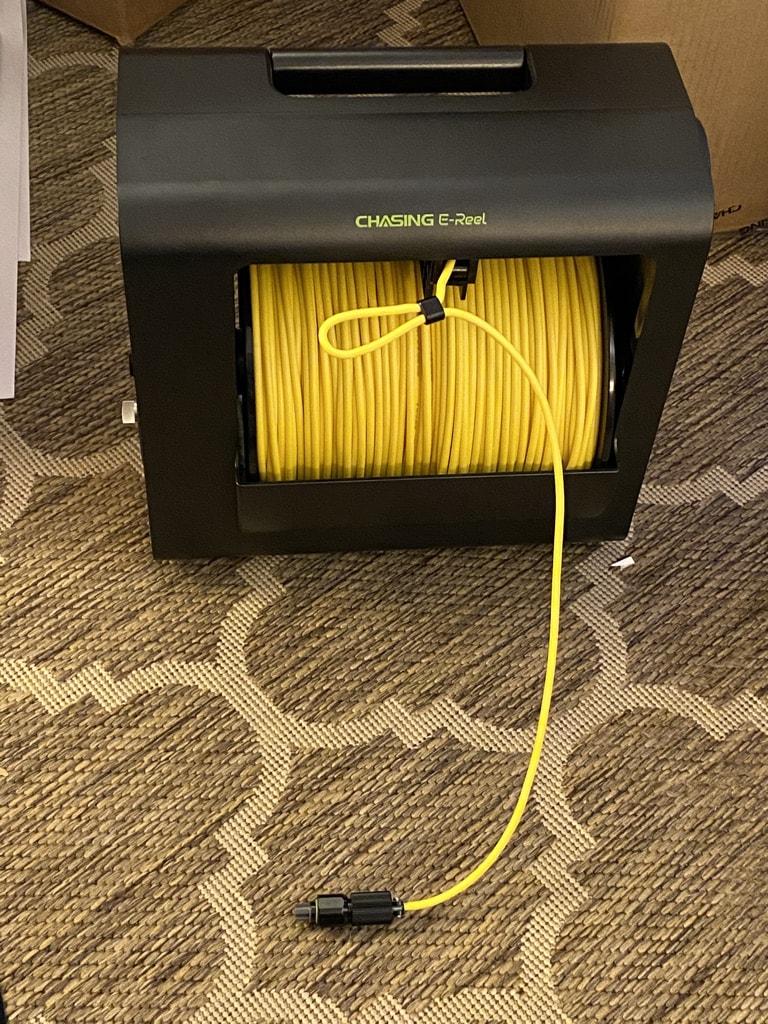
I immediately transferred my 200 meter tether into the E-reel. It was pretty painless although it did get stuck a couple of times, and figuring out how to get the tether wound into the pulley was a bit of a learning curve.
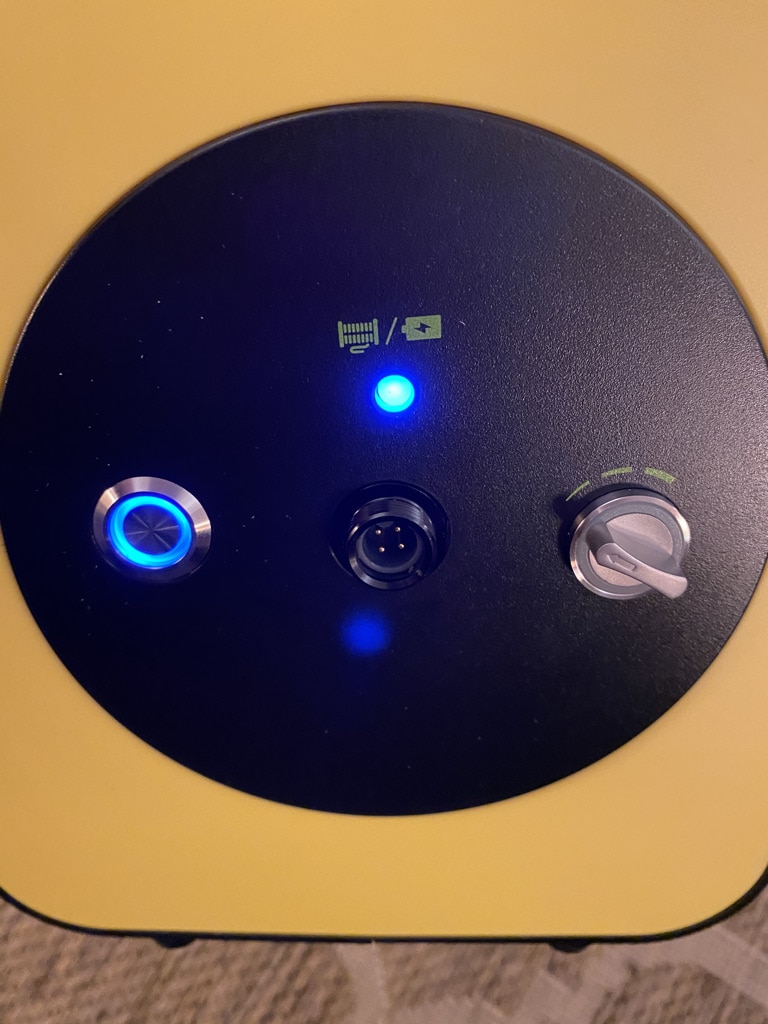
On the side of the E-Reel is a power button to turn on the reeling function, a battery indication light, a power/remote connector, and a speed selector. The E-Reel only reels the tether up once you're done, not out – you still have to manually pay it out, which is totally fine with me. I always pre-pay out a lot of extra before diving. Having the ability to reel it up after you're done via motor is super nice.
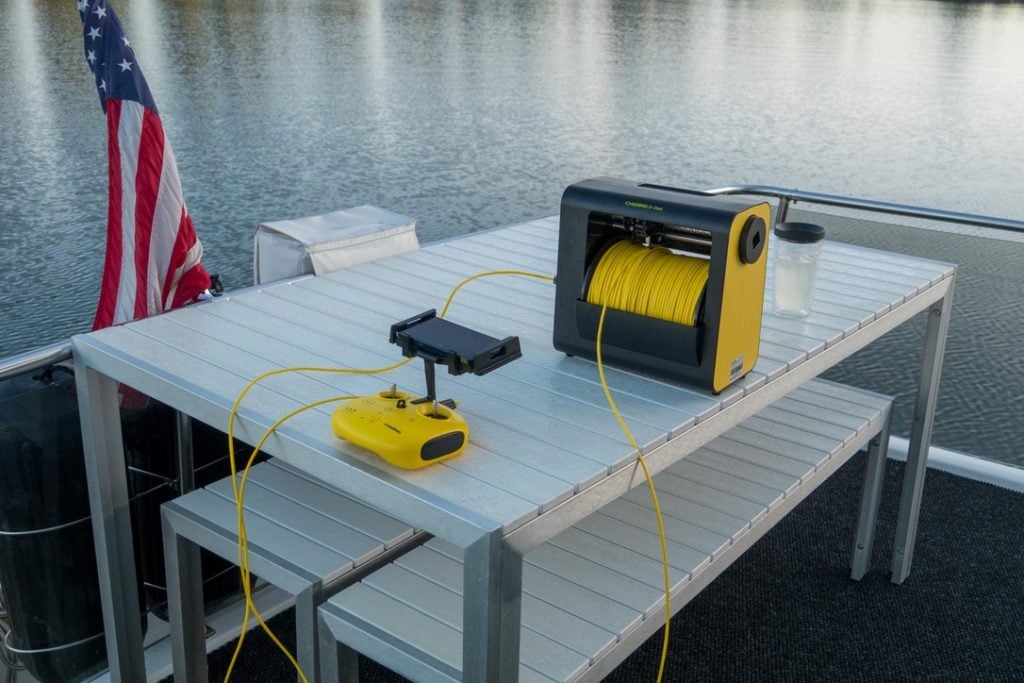
Pros
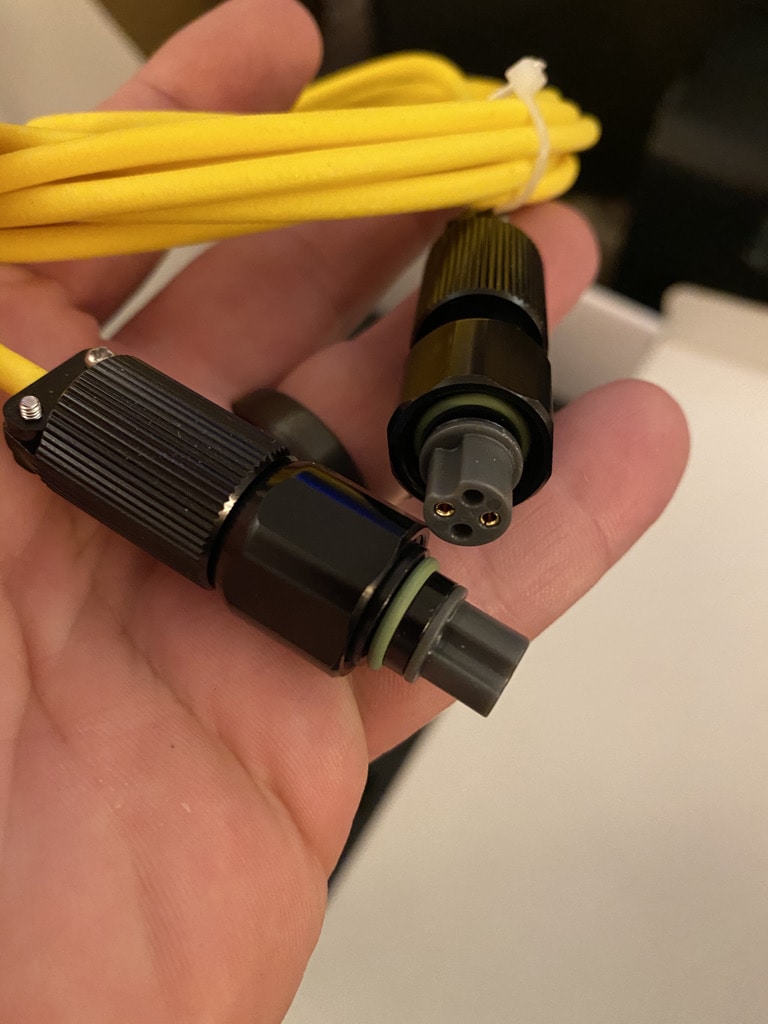
Quality cabling and components – the cables and connectors used are really good quality. They feel like they're made of aluminum and are well machined and good fit and finish. There are nice little o-rings (spares included) which prevent water intrusion, and the ends appear to be something you could field replace if needed, which is super nice.
Excellent control capabilities – having the ability to move around all axes is a game changer compared to the Trident and other cheap ROV's I've used. You can point the thing in any direction you want, even straight up when looking at the bottom of a boat, which is super amazing. This has allowed a lot of different shots and angles for the camera and more flexibility when trying to grab things. The controls take some getting used to, but you can change every axis of the unit, roll it side to side, point it straight up and down, slide sideways keeping the camera on something – pretty amazing.
Motors are easily removable – three screws and a single electrical plug that is modular, and the motor is removed. That's way easier than the multi-step process for the Trident.
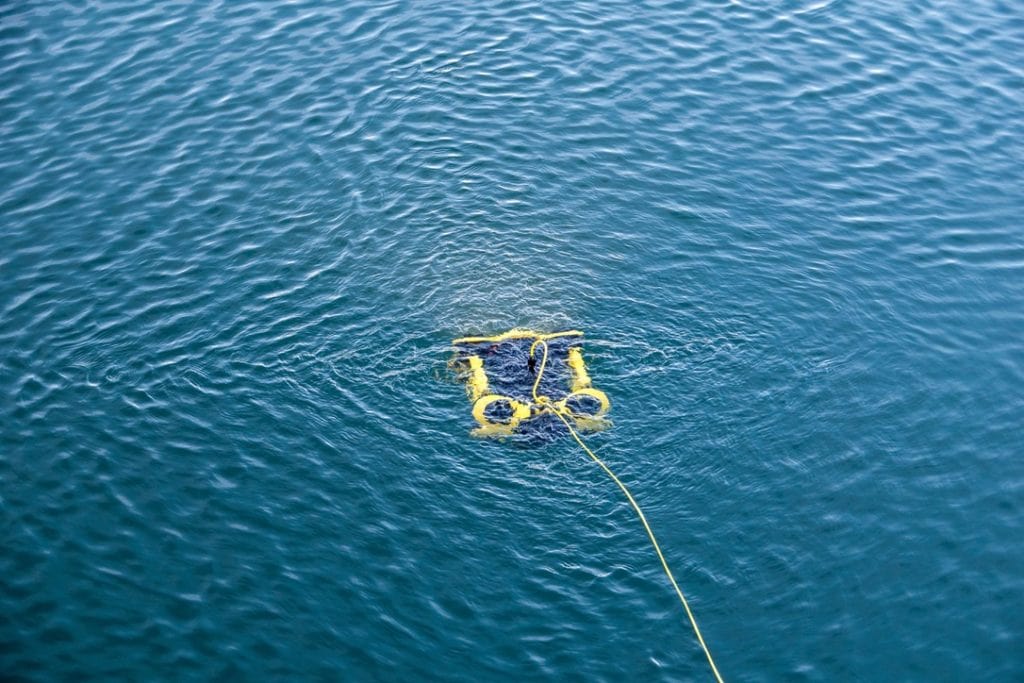
Auto leveling – once you “unlock” the ROV, it will self level and stay generally at the same point. It uses the motors to do this and is quite a thing to watch. It generally can stay on station that way without much attention, and is about as close to a hovering quad copter as I've seen with any ROV.
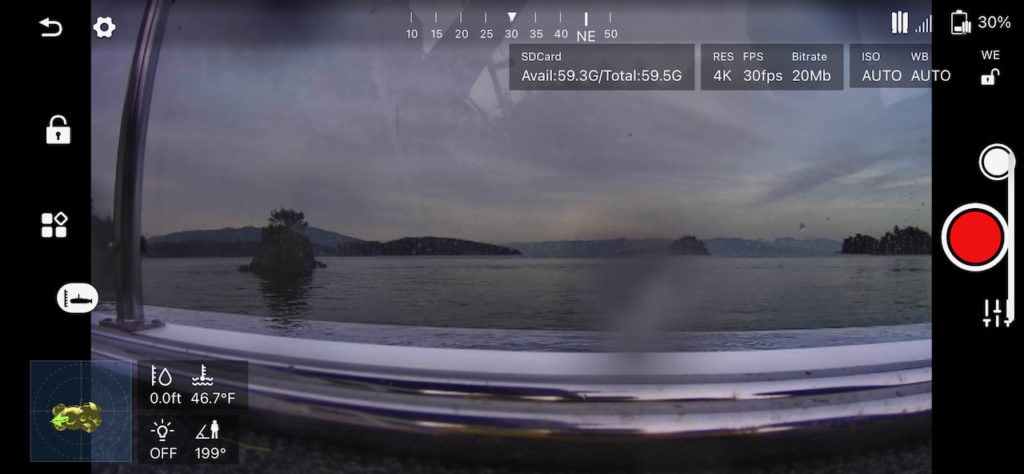
Awareness – one of the biggest challenges with ROVs is getting disoriented underwater, and not knowing where the darn thing is relative to your position. Chasing have a number of different bits of info on the screen that helps you including a diagram that shows the orientation of the ROV with a big arrow showing the front (yes!). I've been able to point that arrow towards myself, and drive the thing directly back to me without surfacing, which is usually what I would do in the past.
Well built remote – having had a number of quad copters and ROVs that require game controllers, the Chasing one is a nice change. Dedicated cable between it and the E-Reel/ROV is perfect,
On board SD card – the Trident didn't have this, and recorded to storage on board you couldn't remove. To get the video and photos out of it was a joke and took hours. Having it on an on board SD card is nice so you can pop it out and download it using a computer.
Attachments – you'll see a matching one of these in Challenges due to performance, but the ability to attach various things is a definite selling point. The grabber arm in particular is super fun.
Single charger – this is nice so you can plug everything in with the provided 3 ended cable. It is a bit slow, but that is to be expected with a single charger. The plugs are also well designed and fit well.
Lots of stuff included – you get the remote, cables, extra screws, extra o-rings, sun shield for the remote, ROV, towel, and a lot of other nice things. Most vendors charge you for each of these, or require you to use 3rd party game remotes and the like. It's nice to have all of this included.
Challenges
I'm pretty happy with the Chasing, but there are some problems that are inherent with the product.
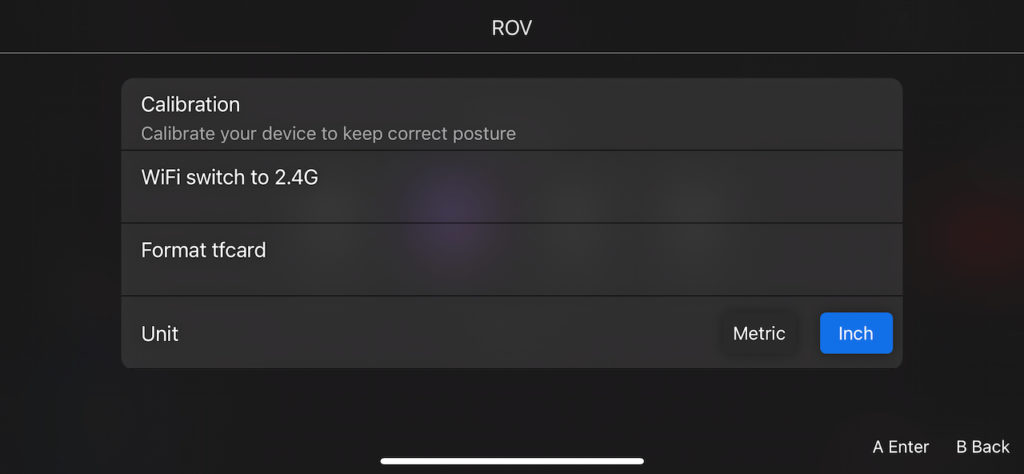
App / Software – this is rough, no other way to put it. Sometimes it reverts to Chinese, many of the popups and warnings are not understandable, and certain features are crossovers to other products and don't work. This has gotten better in the last month, but that's 6 months after I purchased it, and for a product of this cost, absolutely unacceptable at launch. The format button above is a good example – it's not a button, it's in ROV settings, not camera settings, is not really clear (tfcard?) and has no “OK” prompt – it just formats your card immediately.
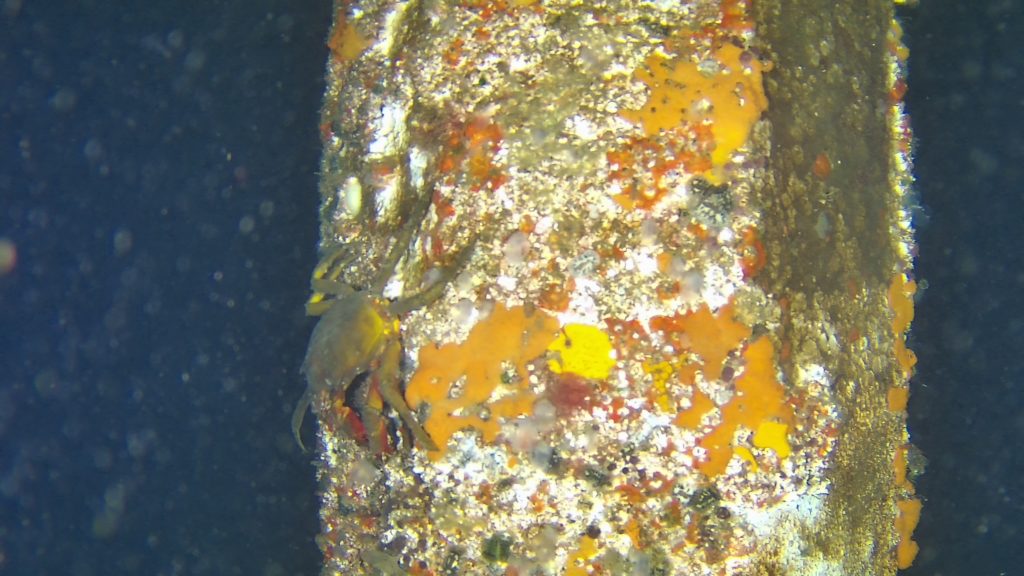
Camera quality – I was really disappointed in the quality of the on board camera. The Trident was pretty terrible too, and the Chasing is moderately better, but not that great. The best footage I've gotten is by attaching a GoPro to the attachment points, which adds a whole other set of issues – you have to charge the GoPro, put it in a waterproof mounting, mount it on the ROV (won't fit in the case with that, so that's an every-time thing), remember to trigger it (oops) and you get a full stream that you have to edit. Oh, and hopefully you don't hit anything to move the angle of the GoPro, and expect about 1/2 speed and 1/2 battery life as a result of the GoPro causing drag. Meh…
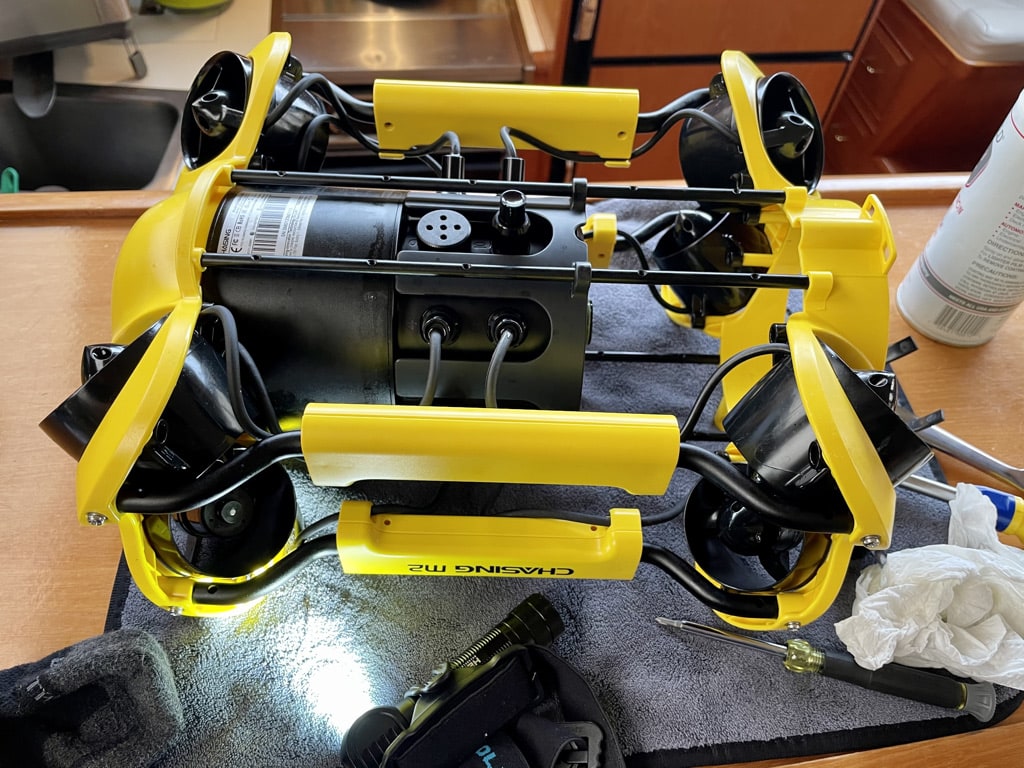
Motors – just like the Trident and other ROVs I've had, even a small amount of material getting into the motors regardless of how you clean it after diving renders the motor either stuck or very tight even after a day. I've tried all of the tricks I've used on other ROVs, and this system is better than the Trident, but it is a matter of time before I lose a motor. The only effective way to avoid this is a fresh water bath after any significant amount of dives, and then an application of waterproof oil.
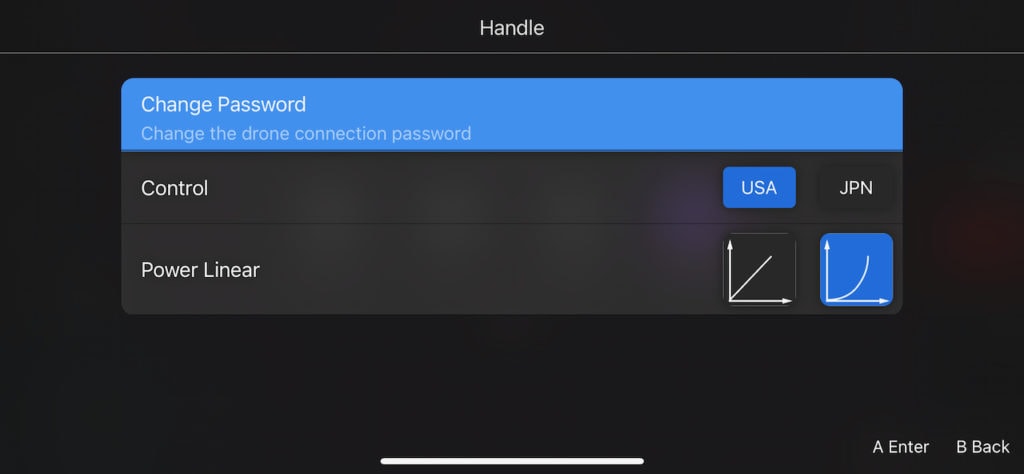
Ultra-sensitive controls – The sensitivity to even tiny movements underwater is way too high. There is a setting to adjust some of this, but it doesn't seem to make much of a difference. You can be honed in on something and touch a control to move up/down/left/right and the entire picture jumps terribly. I've asked Chasing several times about this, but they have not been able to clarify if this will be changed. Other systems I've used have low/med/high settings so that once you get on-site, you can make very gentle control changes to stay on station.
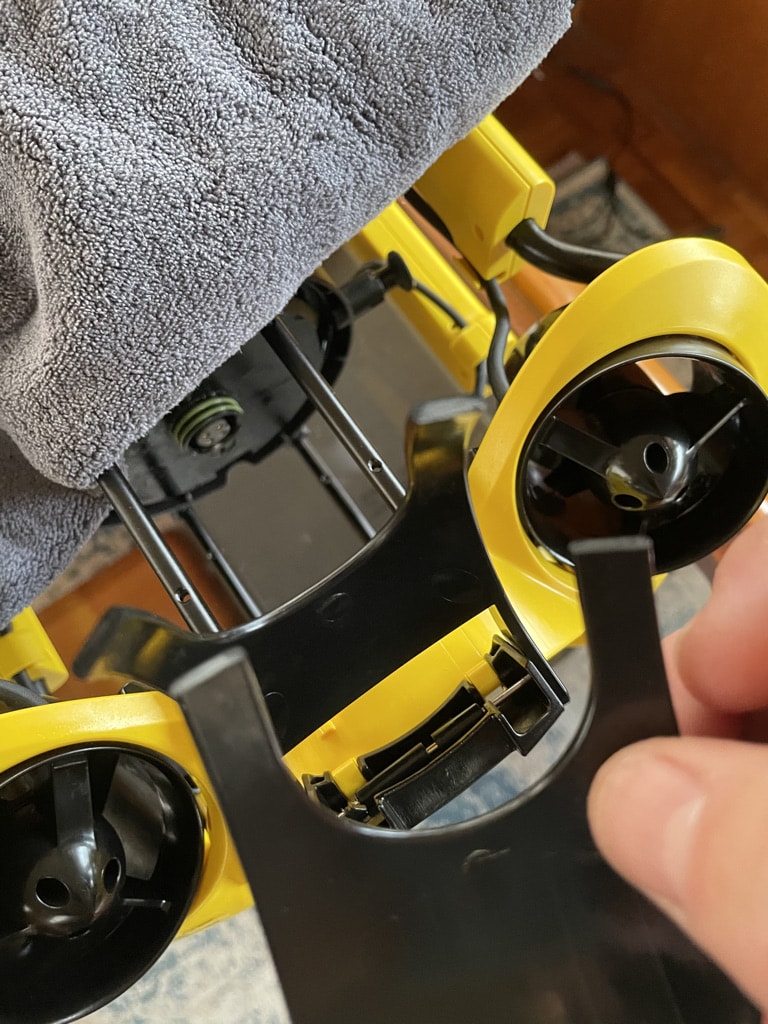
Battery retention bracket broke – while I was putting the battery in the unit, I closed the back bracket, and it broke, without much pressure. It costs $7 to get it, $30 to ship it, and I have to send money to a weird PayPal address, take a screen shot and send it to Chasing…. Doesn't really feel like a good process (see Support). There are two other locking pins that hold the battery in, and I use a big strap of gaffers tape across the broken bracket for now and have had no issues.
Battery range – this is woefully less than the specs or information provides. I'm lucky to get about an hour of diving on a single stock battery. You can add a bigger battery, but I expected a lot better.
Support – support is through the factory in Hong Kong, and the people are nice, but there are significant delays and language barriers. Just to ship the unit took several weeks, and then it was stuck in customs for a while.
E-Reel fails a lot – the concept is good, but getting the tether on the pulley with cold hands is hard, the thing jams a lot due to the close clearances, and due to what appears to be a design issue, the belt that runs things slips often. I think I'd rather just have a manual reel for the price without any of the tight spaces to cause issues.
Attachments & Performance – this was one of the selling points of the Chasing to me, being able to add various things to it. While it has a bunch of points on the top and bottom to attach things, just about anything I've attached causes enough drag on the platform that it can't overcome well at all. The hour or so battery life plummets even further with a GoPro on board. Adding the claw reduces it even more – I was lucky to get just beyond 30 minutes. I would expect that if you design a platform and market it to have attachments, that you size the motors and battery appropriately for that, especially for this price.
Best Practices
Video
If you're looking to get the best video results:
- GoPro required – I never rely on the on-board camera. It's gotten better in recent app updates, but the GoPro is far better quality. This means charging, mounting, and triggering it every time, and living with the drag and less battery life, but if you're trying to film something this is the only way.
- Do not throw – Chasing show throwing the ROV into the water to get started. My experience with this results in changing the GoPro angle no matter what mount you use, and I avoid it.
- 30-45 minute battery life – assume you have about 30 minutes of sustained travel with the extra drag of the GoPro
- On board camera – I usually have this recording all the time, but if you're worried about battery life you could cut that out. Just hope that your GoPro is still recording!
- Post processing necessary – since you're filming underwater, you'll need to spend some time in whatever you use to post process your video. I use Adobe Premiere and mess with the colors in particular to cut out the green which is present in our waters a lot. In addition, I spend a lot of time on highlights and shadows to get things dialed in.
Exploring
In order to get the best general performance if you're just exploring:
- Ditch the GoPro – it adds too much drag and reduces battery time significantly
- Only run the lights when near the bottom / something of interest
- Descend to 5 feet or so and make your way to the destination – much more efficient
This is the way I use the ROV more than for high quality filming. Even if we're looking at the bottom of a boat (common) I would prefer to have more agility and battery time with worse video.
Video & Photo Settings
Here are some of the screens from the video and photo section of the iOS app. This has gotten progressively better over the last 6 months, but there is still a lot to be done. Many of the features are undocumented, and until you play around with them, you won't know what sort of footage you'll end up with….
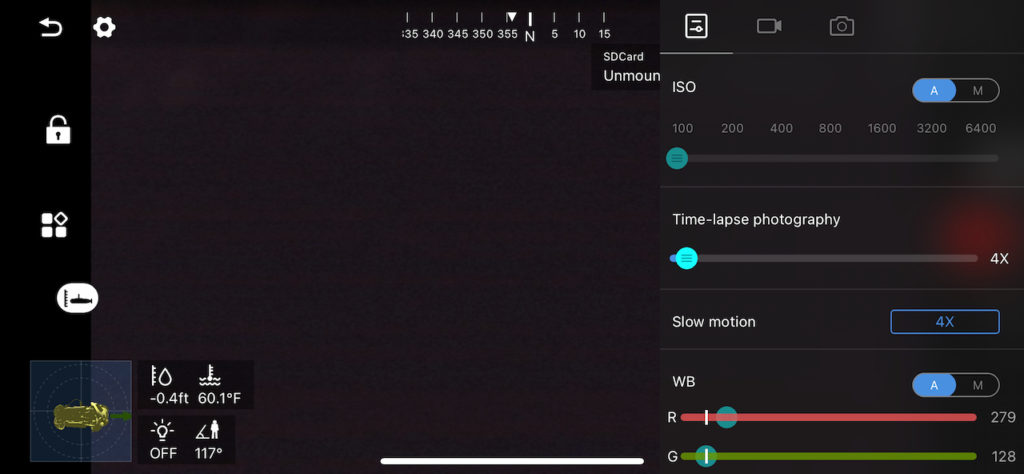
Maintenance
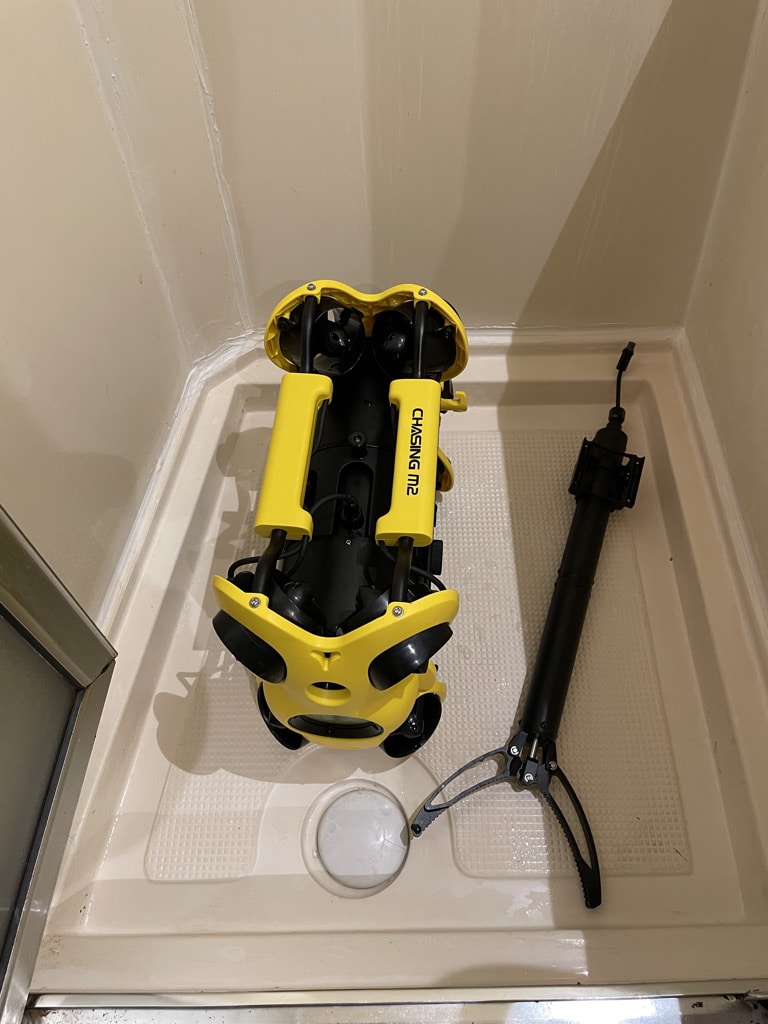
After every dive, even if you're going to leave it overnight, do the following:
- Fresh water rinse any part of the tether that got into salt water.
- Fully immerse the ROV in fresh water for at least 10 minutes and run the motors to clean out any contaminants and salt water
- Use a protective oil like Boeshield on the motors before putting it away
Usage & Example Videos and Photos
The best example of “using” the ROV was a rescue – a welcome mat rescue, but still a rescue! Click the image below to see a hilarious video @mvindiscretion recorded when I retrieved their lost welcome mat from the bottom at Fossil Bay, Sucia Island, in the San Juan Islands.
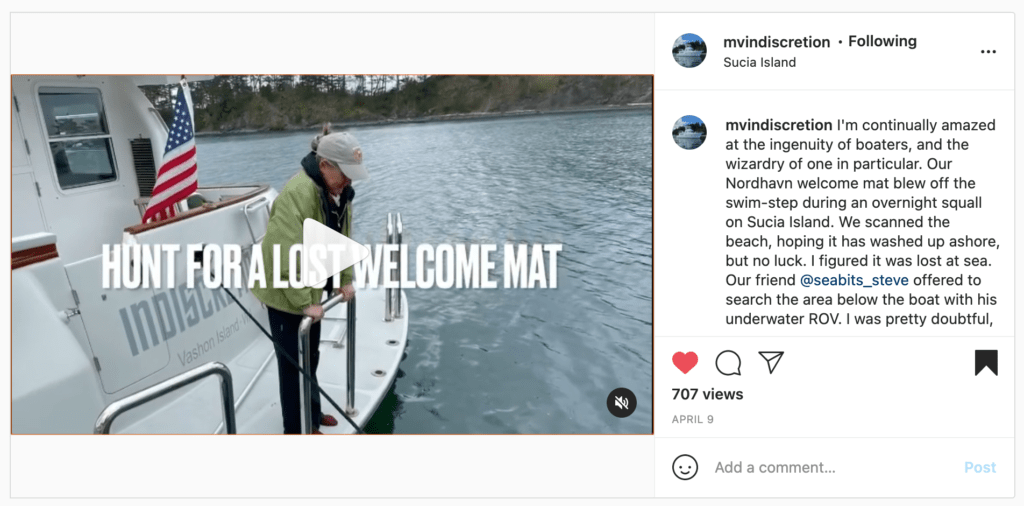
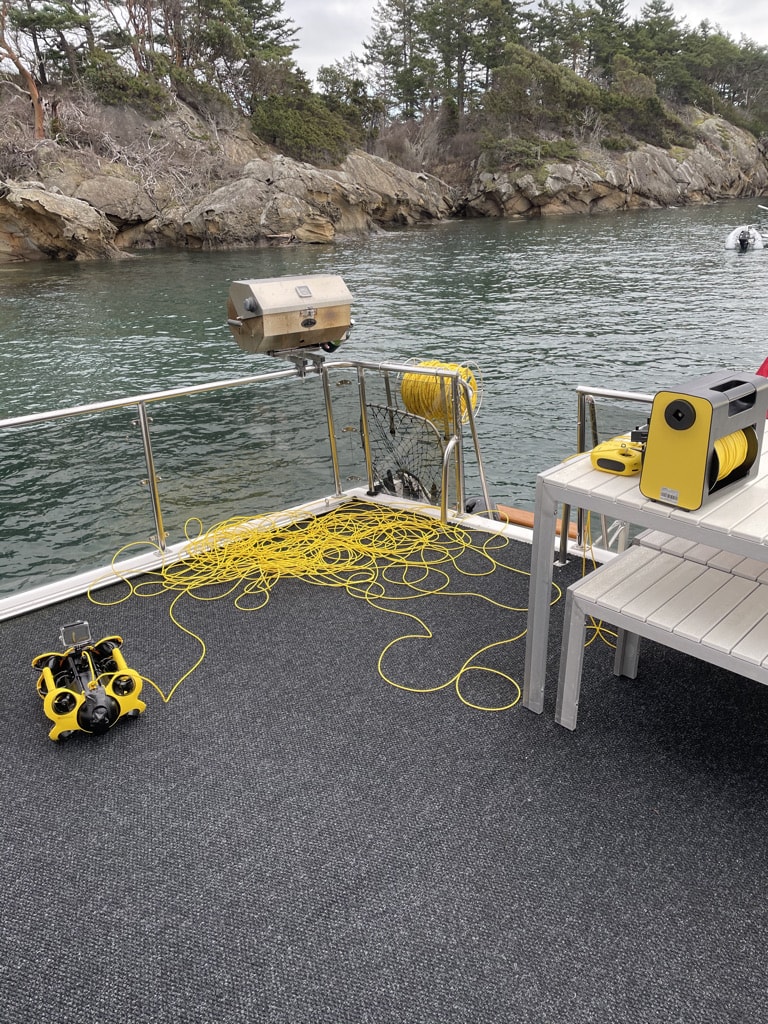
I've done probably 40 dives in the last 6 months all around Puget Sound – from my boat, from docks, from the dinghy, etc.
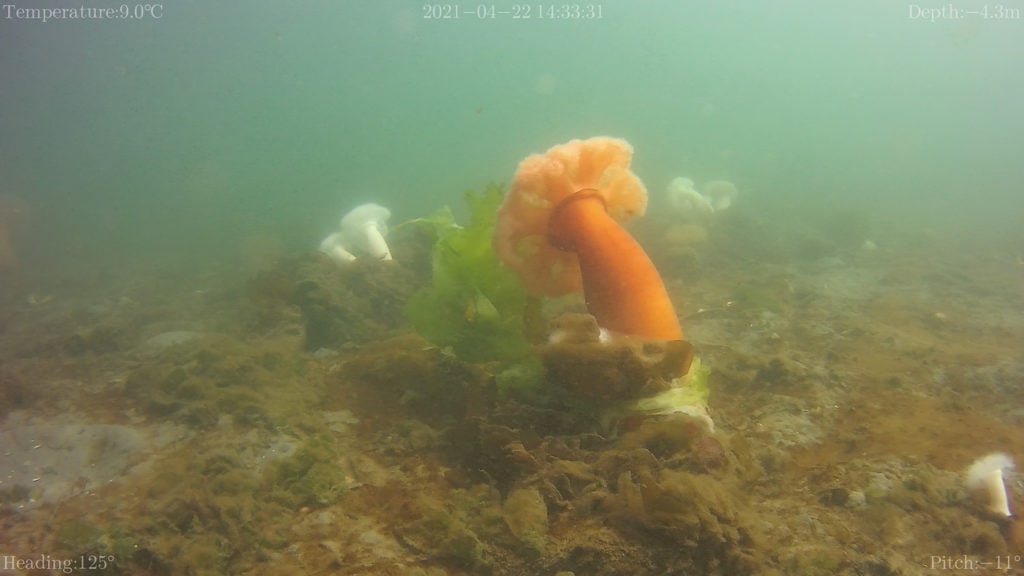
Conclusion
The Chasing is a huge improvement over the Trident, and is super fun to use to look at the bottom of boats, sea life on the sea floor, and tons of other places, but it still has a long ways to go to be worth the price tag. At roughly double the cost of the Trident, I don't believe it's worth the cost for the additional features given the poor performance with accessories, video quality, and control issues. Some of these may be things Chasing can address, but I have yet to see much measurable progress.
If you're looking for a prosumer ROV, I would consider other alternatives which seem to be emerging quickly, and really consider if it is worth it for what you plan to use it for. There are a lot of ~$1000 ROVs that are much easier to use and will allow you to do casual exploration.
Archived Comments
These are read only comments from the old system. Scroll down to participate in SeaBits Discussions, our new interactive forum attached to each article.
Phil Probert
April 23, 2021 at 4:57 pm
Wow. Great review. I’ve been contemplating this one for quite a while and couldn’t find much about it from an independent source. After reading your review, I have to say that I’ll be passing on it (for now) for two main reasons. First, the camera. I absolutely can not stand inferior image quality. That alone would put me off. The second reason is the battery. At this price (and advertised time) I would expect a much better, and more accurate, real life battery situation.
Hopefully, improvements will be made or a competitor will come up with something better. In the meantime, I’ll keep searching.
Steve Mitchell
July 17, 2021 at 1:27 pm
I would not recommend this product at all now. The battery has completely failed, the lights have blown out due to the unit never shutting off for a 10 minute period in the case, and support has become non-existent. One of the worst purchases I’ve made in a while, and a very expensive one…
Alex
September 8, 2021 at 5:47 am
Hi Steve. Have you resolved the issues with the M2? I’m in the market looking to buy an ROV and your review is not very encouraging! I might end up going for the FiFish V6S instead.
Steve Mitchell
September 8, 2021 at 9:10 am
I wouldn’t spend the money on the M2. I’ve not been able to get support to resolve the issues. The lights are still damaged, and the battery doesn’t work appropriately.
Ron Micjan
April 25, 2021 at 11:08 am
Hey Steve, nice article on the chasing. I saw one of these at the oceanology show in seattle last year. The rep brought one of their smaller units out to the Zephyr to do a demo. We were moored at bell harbor. The unit flooded in the first 2 minutes. No sale lol. I just finished assembling a BlueROV2 and plan a test dive on Wednesday. I am very impressed with the BlueROV2 quality, I bought from blue-linked.com their distributor in san Diego who has been very responsive and helpful during the buying and build process.
Steve Mitchell
July 17, 2021 at 1:23 pm
The BlueROV was my second choice, but at the time they had some sort of issue going on with production, or their prices were a lot higher than they were when I checked a month or two ago. The only other big issue was the way it has to be driven – I seem to remember having to have two different devices – a screen and a controller, and they didn’t provide either. It seemed a bit disjointed but perhaps that has been improved.
I was highly interested in the ArduSub interface since I’ve used it’s partner for planes and such in the past.
Daniel
July 21, 2021 at 6:44 am
Hi
I am at the moment considering to expand my small drone company, with the M2 ROV and go underwater. but this review had me stalling big time if i should proceed with this drone.
My thoughts are underwater inspections and small salvage jobs with the arm.
but the battery time etc you described as so poor had me considering.
what are your thoughts in my directions, should i abort mission, or go for another rov model ??
regards Daniel
Denmark
Steve Mitchell
July 25, 2021 at 10:56 pm
I would not personally purchase the Chasing M2 given the failures I’ve had which have gotten worse. Both lights have been destroyed, the unit won’t power off at any point and drains the battery unless removed, and the company has very poor support. So far after almost a month of attempts to get some sort of support, I have no responses other than “send us videos, we don’t believe you”.

